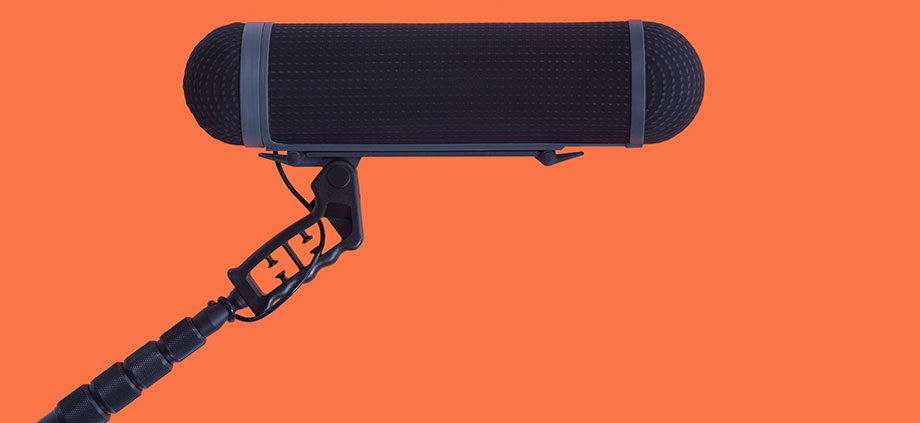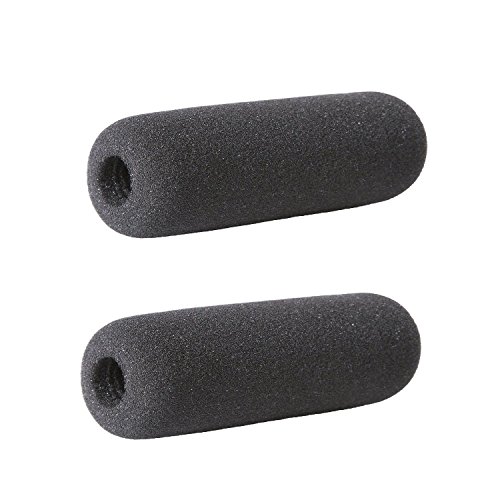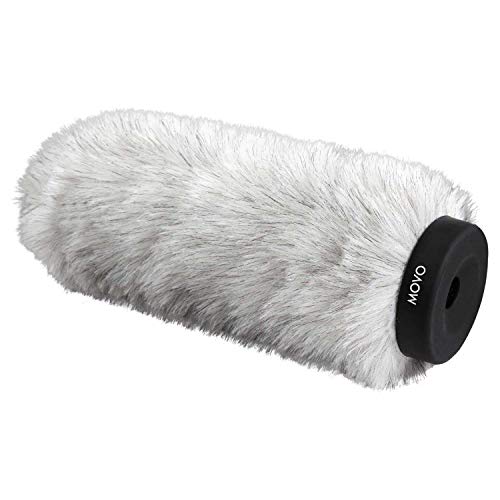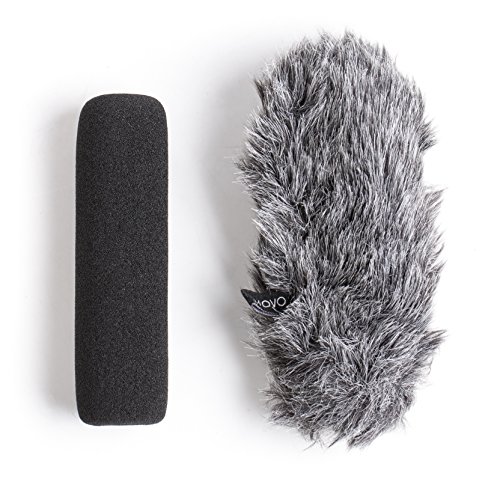If you’re reading this article you’re probably already aware of the absolute havoc that wind noise can wreak on the sound captured by shotgun microphones for film or video. There are several solutions to this problem (including shooting indoors instead, or dubbing the sound afterward with ADR) but let’s assume that you’re determined to capture the sound on location outdoors– wind be damned. If you need good wind cancelling options for shotgun microphones you have several options. Here is a list of windscreen types for shotgun mics.
We’ve arranged these in order of how much wind they can handle, from less wind to more wind:
- Level 1 (light wind): Simple foam windscreens
- Level 2 (moderate wind): Foam windscreen + a “dead cat” furry cover
- Level 3 (heavy wind): Blimps
- Level 4 (extreme wind): Blimp + a “dead cat” furry cover on top
The downside of using any of these methods past a simple foam windscreen for shotgun microphones is that the sound you capture will be slightly muffled. As a result the high frequency range may be cut a bit (which reduces the hiss of the wind but may also narrow the range of normal sounds that you capture). As a result it’s always worth testing your audio gear setup before you head out for a shoot so you know roughly how it’ll perform for the types of sounds you’re looking to capture.
Below we’ll go into detail on each of these types of wind protection and make some specific product recommendations for the best windscreens for shotgun microphones.
Foam windscreens and windshields for shotgun microphones
Movo F12 Foam Windscreen for Shotgun Microphones
Foam windscreens are pretty basic: the main thing you want to be sure of is that the length of your microphone will fit within the windscreen. This two-pack of foam windscreens for shotgun microphones is well reviewed and fits microphones up to 12 cm in length (a little under 5 inches for the portion of the shotgun that is capturing sound– no need to cover the stock of the barrel which isn’t capturing sound). If you have a longer shotgun microphone check out this model for microphones up to 18cm (a little over 7 inches of microphone).
Pros of foam windscreens: One benefit of using just a foam windscreen for wind cancellation is that it’s very light. Weight counts when you’re holding a long boom pole for extended periods of time, and heavy wind shields can make you tired faster. Foam generally doesn’t do much to cut down the high frequency response.
Cons of foam windscreens: On the con side, foam frankly doesn’t do a ton to cut down especially windy weather noise. Depending on how windy it is, a simple foam windscreen may be no match for the weather outdoors.
“Dead cat” fuzzy microphone muffs for shotgun microphones
Neewer NW-MIC-121 Outdoor Microphone Furry Windscreen Muff
The fuzzy “dead cat” microphone muff is one step above a simple foam windscreen. Muffs can be used either on top of a bare microphone or on top of a microphone that is already “wearing” a foam windscreen underneath. As an added layer of protection, shotgun microphone muffs emulate the look and feel of fur which is the reason they have been given the “dead cat” or “dead wombat” nicknames. (However today virtually none of these products are made from actual fur– artificial fur is used which cuts down on the cost, improves durability and eliminates animal cruelty.)
Pros of “dead cat” microphone muffs: “Dead cat” muffs can seriously cut down on the amount of wind noise that shotgun microphones pick up on. Although they do add a small amount of weight to your boom microphone setup, it’s usually not a substantial amount. You can choose to layer either a foam windscreen on top of them or alone on top of a naked mic.
Cons of “dead cat” microphone muffs: Shotgun microphone muffs will cut down on your high pitched frequencies a bit more than just a foam windscreen alone. And if it’s raining or snowing while you’re using these, they may get funky afterward (a hair dryer can be used afterward to make sure it’s completely dry before you pack it away however).
See our related article: Best Shotgun Microphones and Boom Mics for Filmmakers
Movo WS220 Professional Windscreen
Bonus to consider: This alternate microphone muff windsock will not acomodate a foam shield underneath it because it has foam built in.
This shotgun microphone wind noise shield reduces wind noise by 24dB all the way up to 40 decibels. It is available in a range of sizes all the way up to 27cm (over 10.5 inches).
Made of artificial rabbit fur.
Movo WS-G7 Foam & Furry Indoor/Outdoor Microphone Windscreen Combo Pack
Bonus to consider: This two pack of one foam windscreen and one slip-on furry muff that can be layered on top of it fits the Rode VideoMic (VMGO) and comes with a one year warranty. If you happen to use that specific microphone, this wind sock combo pack might be a good choice.
Blimp Microphone Windshield/Windjammer
Rode Blimp Microphone Windshield Suspension System
The blimp – a hard shell honeycomb pattern shotgun microphone enclosure is an extremely effective wind jammer. But it’s also heavy duty and can cancel out some higher frequencies so you’ll need to be thoughtful about when you really need to deploy it. Blimps can also add quite a bit of weight to your boom microphone setup. This particular Rode Blimp kit comes with both the hard shell enclosure for the microphone as well as the grip mount (which can screw on to a boom pole or optionally be used handheld), as well as a furry coat, which adds on even another level of microphone wind protection. This shotgun microphone blimp can accomodate even especially long shotgun mics almost 13 inches in length. Includes XLR “tail cable.”
Pros of microphone blimps: Really effective wind noise reduction, even in relatively high winds!
Cons of microphone blimps: Can be complicated to set up, and certainly adds weight and size to your boom microphone package.
Sennheiser MKH-416 Shotgun Microphone Pro Pack
Bonus to consider: This microphone kit includes a Sennheiser 416 shotgun mic, a Sennheiser 60-1 blimp windscreen, a furry muff, plus a pistol grip that works with the combo. If you don’t already have a shotgun mic then you might want to consider this kit which also some swith some mounting accessories. Boom pole and XLR cable not included.
Honorable mention: Nylon windscreens for shotgun microphones
Movo WST220 Professional Premium Quality Ballistic Nylon Windscreen
Bonus to consider: This is a unique produce from Movo which promises to reduce wind noise from 24db all the way up to 40db– a substantial amount. It’s somewhere in between a blimp and a dead cat mic muff and it’s been getting good reviews despite being a relatively new entrant to the market (it’s been around since 2012 or so whereas most of these wind muffling methods go back decades). This microphone wind jammer comes in a variety of sizes all the way up to 30cm (almost a foot long for very long shotgun mics).
Frequently asked questions about noise cancellation techniques for shotgun microphones
What is the most effective way to shield a microphone from wind noise? This article lists the ways you can protect a shotgun microphone from wind noise from the least effective to the most effective for heavy wind. The absolute most effective way to reduce wind noise for video in heavy wind is a blimp style microphone enclosure (as listed above) with an artificial fur muff on top of it.
Is there a way to remove wind noise from audio after it’s been recorded? Unfortunately there’s not a very effective way to get rid of wind noise after it’s been recorded. You can’t just “fix it in post.” Although you may be able to minimize it slightly using a high pass audio filter in your editing program, the most effective way to reduce wind noise after having shot your video is by dubbing the audio– essentially re-recording the audio track (and re-creating any foley sound effects and a light ambient noise track) and placing it at exactly the right times so the viewer can’t tell that the audio was re-recorded. In filmmaking this process is commonly called ADR, looping, or audio re-recording.







